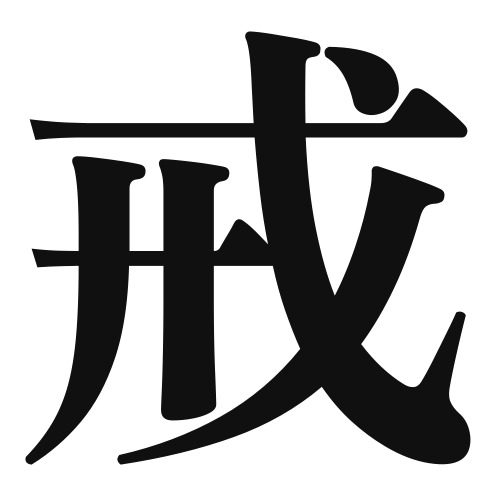1. Overview of Meaning
The kanji “戒” (kai) generally means “to admonish” or “to warn.” It conveys a sense of caution or a reminder to avoid wrongdoing, often associated with moral or ethical guidance.
2. Formation and Radical
Formation of the Kanji: The kanji “戒” is a compound character, which means it is formed by combining different elements. It is classified as a 会意文字 (ideogram), where the components together convey a specific meaning. The left part “木” (tree) symbolizes something that can be cut down or destroyed, while the right part “戒” suggests a warning or admonition.
Radical: The radical of “戒” is “木” (tree), which often relates to nature or growth in various kanji.
3. Examples of Usage
Common Words and Phrases: Some common words that include “戒” are “戒律” (kairitsu – precepts) and “戒め” (imashime – admonition).
Example Sentences in Daily Conversation:
- 彼は自分の行動に戒めを持っている。 (He has a warning for his own actions.)
- 戒律を守ることは大切です。 (It is important to follow the precepts.)
4. Synonyms and Antonyms
Similar Kanji: A similar kanji is “警” (kei), which means “to warn” or “to alert.” While both kanji convey a sense of caution, “戒” is more focused on moral admonition, whereas “警” is often used in the context of safety or security warnings.
Opposite Kanji: An antonym for “戒” could be “放” (hō), which means “to release” or “to let go,” indicating a lack of restraint or caution.
5. Cultural and Historical Background
Relation to Japanese Culture: The concept of “戒” is deeply rooted in Japanese culture, particularly in the context of Buddhism and moral teachings. It emphasizes the importance of self-discipline and ethical behavior.
Proverbs and Idioms: One common saying is “戒めを忘れずに” (Imashime o wasurezu ni), which means “Do not forget the admonition,” highlighting the importance of remembering moral lessons.
